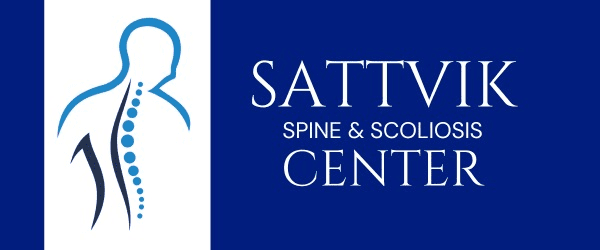Understanding Scoliosis: Causes, Symptoms, and Treatment Options
Scoliosis is a medical condition that affects the spine, causing it to curve in an abnormal manner. This condition can affect people of all ages, but it is most commonly diagnosed during adolescence. In this article, we will explore what scoliosis is, its causes, symptoms, and treatment options.
What is Scoliosis?
Scoliosis is a condition that causes the spine to curve abnormally, resulting in an “S” or “C” shape instead of a straight line. The curvature can range from mild to severe, and in some cases, it can cause visible deformity.
Causes of Scoliosis
The cause of scoliosis is not always known, but it is believed to be a combination of genetic and environmental factors. Some types of scoliosis are present at birth, while others develop later in life. Some of the known causes of scoliosis include:
- Genetic factors: Scoliosis can run in families, suggesting that there may be a genetic component to the condition.
- Neuromuscular conditions: Certain neuromuscular conditions, such as cerebral palsy, can cause scoliosis.
- Congenital scoliosis: This is a type of scoliosis that is present at birth and is caused by spinal malformations.
- Idiopathic scoliosis: This is the most common type of scoliosis, and it occurs when there is no known cause for the condition.
Symptoms of Scoliosis
The symptoms of scoliosis can vary depending on the severity of the curvature. Mild cases may not cause any noticeable symptoms, while severe cases can cause significant pain and discomfort. Some of the common symptoms of scoliosis include:
- Uneven shoulders or hips
- Uneven ribcage
- A visible curvature of the spine
- Back pain
- Fatigue
- Difficulty breathing
Treatment Options for Scoliosis
The treatment for scoliosis will depend on the severity of the curvature, the age of the patient, and other factors. Mild cases may not require any treatment, while more severe cases may require surgery. Some of the common treatment options for scoliosis include:
- Bracing: This is a common treatment for mild to moderate scoliosis. A brace is worn to help straighten the spine and prevent further curvature.
- Surgery: In severe cases, surgery may be required to straighten the spine. This may involve the use of metal rods or screws to hold the spine in place.
- Physical therapy: Physical therapy can help improve posture and reduce pain associated with scoliosis.
When is scoliosis surgery necessary?
The decision to recommend scoliosis surgery is usually made after a thorough evaluation by a healthcare provider, which may include physical exams, imaging tests such as X-rays or MRI scans, and assessments of the patient’s overall health and medical history.
If you or someone you know has scoliosis and is experiencing significant pain or discomfort or is concerned about the progression of the curvature, it is important to consult with a qualified healthcare provider to determine if scoliosis surgery is the best treatment option.
What is scoliosis surgery?
Scoliosis surgery is a medical procedure that is performed to correct a severe curvature of the spine caused by scoliosis. This surgery is usually recommended when the curvature of the spine is greater than 45 to 50 degrees and is causing significant pain or discomfort, or when there is a risk of the curvature worsening and causing further damage.
Scoliosis Case Study
Cost of scoliosis surgery
The cost of scoliosis surgery can vary widely depending on several factors such as the location of the hospital, the surgeon’s fees, the complexity of the surgery, the patient’s insurance coverage, and the patient’s overall health.
Risk of scoliosis surgery
Like any surgical procedure, scoliosis surgery carries certain risks and potential complications. Some of the risks associated with scoliosis surgery include:
- Infection: There is a risk of developing an infection at the surgical site, which may require antibiotics or additional surgery to treat.
- Bleeding: There is a risk of excessive bleeding during the surgery, which may require blood transfusions or additional procedures to control.
- Nerve damage: There is a risk of nerve damage during the surgery, which can result in numbness, weakness, or paralysis.
- Blood clots: There is a risk of developing blood clots in the legs or lungs after the surgery, which can be life-threatening.
- Hardware failure: There is a risk of the metal rods, screws, or hooks used to straighten the spine becoming dislodged or breaking, which may require additional surgery to fix.
- Pain and discomfort: Patients may experience significant pain and discomfort after the surgery, which may require pain medication and/or physical therapy to manage.
- Loss of flexibility: Patients may experience a loss of flexibility in the spine after the surgery, which may limit their range of motion.
Conclusion
Scoliosis is a condition that affects the spine, causing it to curve abnormally. While the cause of scoliosis is not always known, there are several treatment options available, including bracing, surgery, and physical therapy. If you suspect that you or your child may have scoliosis, it is important to consult with a healthcare professional for an accurate diagnosis and treatment plan.
It is important to discuss the risks and benefits of scoliosis surgery with a qualified healthcare provider to determine if it is the best treatment option for your individual case.




